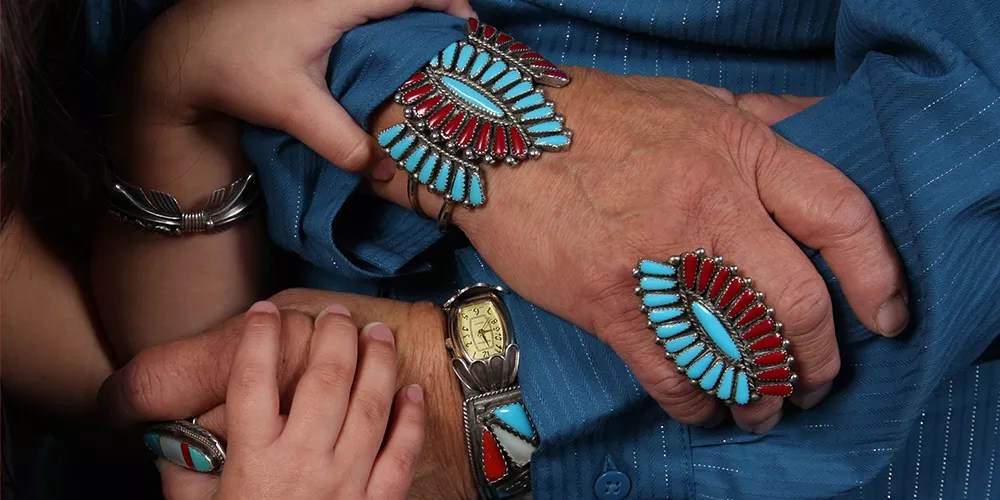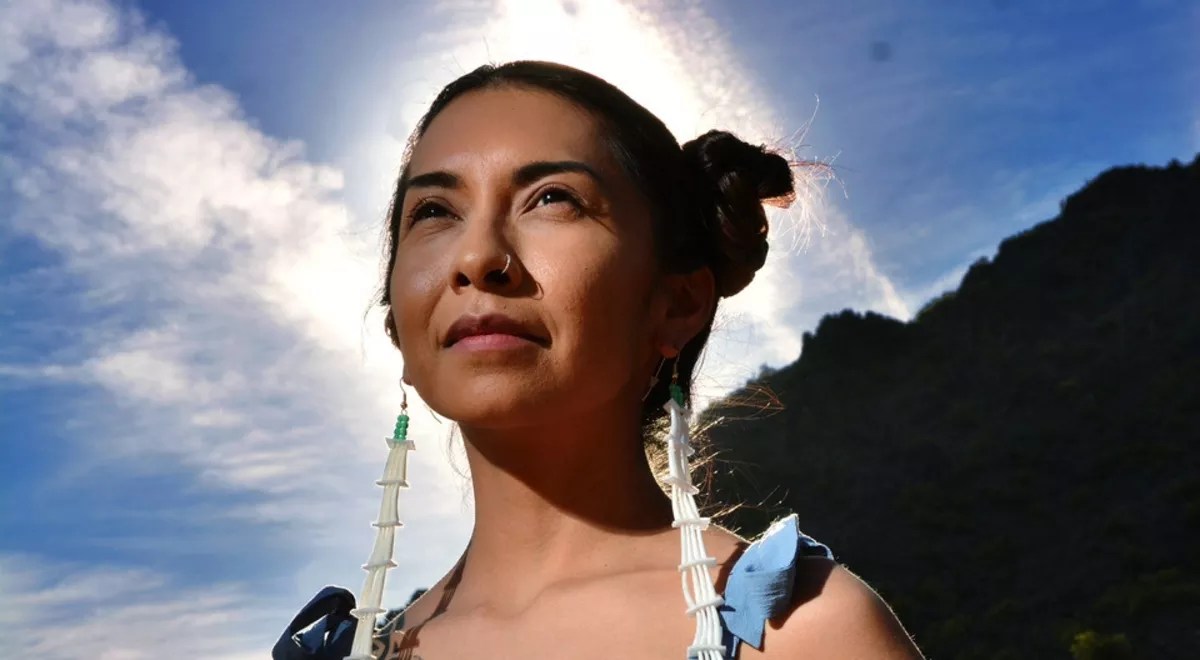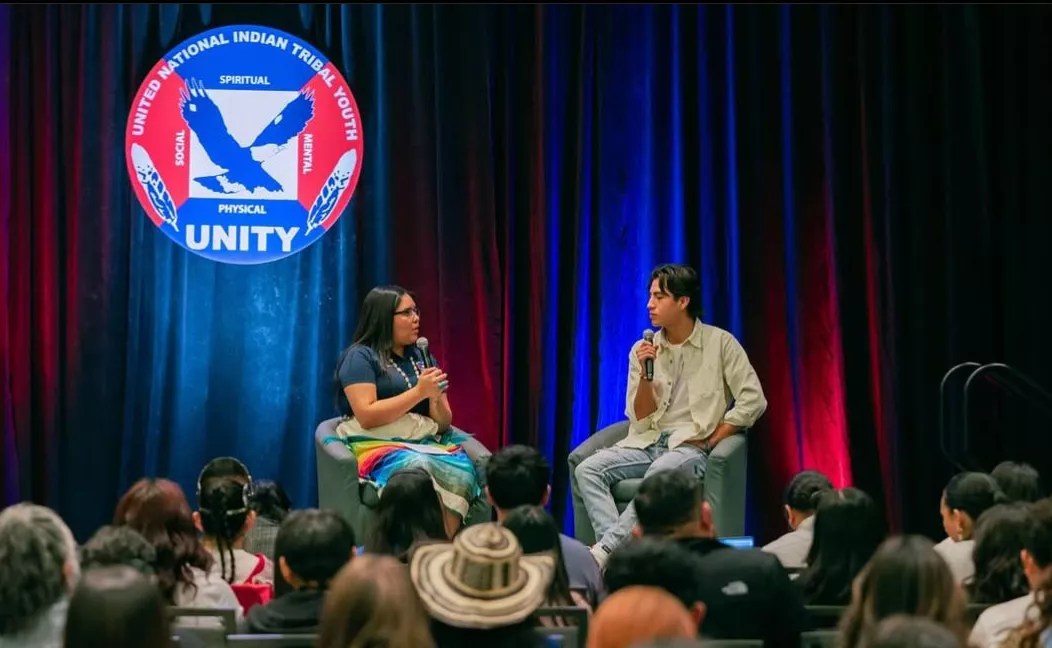
bojorgensen/Adobe

Audio By Carbonatix
During the most vulnerable years of her young life, Kristin Payestewa-Picazo felt hopelessly alone.
As a Navajo and Hopi girl growing up in Flagstaff, she was bullied by classmates because she was Native American. Her mother struggled with alcoholism and other mental health issues. Payestewa-Picazo struggled, too, and felt that she had no one with whom she could share her burdens. She began to cut herself on her thighs and eventually her wrists, rationalizing that she was “taking control of my mental health by taking it out on myself.” By 16, she made peace with the possibility that one wrong cut could end her life. Anything to make her psychic pain fade away.
When her stepfather discovered her cuts and urged her to stop, shame consumed her. She stopped eating and becoming dangerously thin. When she nearly passed out at her high school graduation, her grandmother begged her to eat and to heal. Payestewa-Picazo ate, but she also drank. By 20, alcohol had become a problem. Deep down, she knew she was trying to die.
It wasn’t until Payestewa-Picazo turned 24 and met her now-husband that she finally sought help. She has steered out of the skid that defined her adolescent years, but to that point, her story had been an all-too-common tale among Native Americans. In Arizona, Indigenous people – those that belong to the American Indian and Alaska Native demographics, as tracked by the Arizona Department of Health Services – kill themselves at a far higher rate than the overall population.
This year, make your gift count –
Invest in local news that matters.
Our work is funded by readers like you who make voluntary gifts because they value our work and want to see it continue. Make a contribution today to help us reach our $30,000 goal!
Last year, there were 31.9 suicides per 100,000 Indigenous people in the state, compared to an overall rate of 19.7 per 100,000 Arizona residents. That was actually a slight dip in Native suicides from 2023, when the rate was 35 per 100,000. In Arizona, no other racial demographic comes close.

Arizona Department of Health Services
Those numbers signal a crisis, and one that has persisted in Arizona for years. In 2022, the state health department outlined a plan to collaborate with tribal leadership and other agencies to support mental health initiatives in Maricopa County and surrounding areas. Native Americans’ suicide rate may have dipped, but it’s still devastatingly high.
The reasons for that are several. Discussing mental health remains taboo for many, and those who do seek help – especially those living in tribal communities – find that care facilities are too far away. When they make the trek, they too often find doctors who aren’t Native and are not able to bridge cultural divides.
Growing up, Payestewa-Picazo’s family never discussed mental health. She never knew there were resources for people like her who were struggling. When she finally sought help, it took about a year of cycling through therapists to find one who shared her cultural identity. Now, at 37 years old, she is a PhD candidate studying health equity for Indigenous nurses and physicians.
She feels ready to talk about her struggles, break these cycles and encourage healing for Native youth. She knows that if there were more mental health resources and less hesitancy to talk about it, she might have spared herself years of suffering. The numbers don’t lie – this is a full-blown mental health emergency.
And until it’s treated like one by those with the power to fix it, Native health advocates like Payestewa-Picazo know that an alarming number of Native people who feel there is no way out will attempt to take their lives.
“The world is burning,” Payestewa-Picazo said. “We need to have people that hold power, whether you’re in health care, whether you’re in government, to speak out.”

Kristin Payestewa-Picazo is a PhD candidate studying health equity for Indigenous nurses and physicians.
Courtesy of Kristin Payestewa-Picazo
Too many obstacles
Darien Fuller remembers going to an Indian Health Services facility as a child growing up in the Navajo Nation. The drive was long, as were the wait times. The staff weren’t Native and didn’t look like her. Could she trust them?
“It was scary, rushed and not very comforting,” said Fuller, a member of the Prairie Band Potawatomi and Diné tribes. “A little kid is scared of all the noises. It was very cold and it didn’t feel like a very safe place to go to seek care.”
Fuller’s family didn’t have much of a choice – the IHS clinic was the only one around. But it often took so long to be seen or receive simple prescriptions that they felt discouraged from coming back. If they were referred to a specialist, that just meant driving to see someone who was even farther away.
How seriously would you need the doctor to drive an hour there and back?
When accessing healthcare is such a burden, people dismiss their own physical and mental health challenges. A 2023 report by Native Health, a nonprofit organization that provides health and wellness services to Native Americans, found that 27% of people in Arizona’s Indigenous communities said they couldn’t access care because they lacked transportation. Another 27% pointed to the long distances to healthcare facilities.
On top of long commutes, a lot of Native communities are less likely to be insured than the population as a whole. Arizona has some of the highest uninsured rates, a gap that the Arizona Health Care Cost Containment System, the state’s Medicaid program that provides coverage for lower-income communities, is meant to address. However, accessing AHCCCS requires heaps of time-consuming paperwork.
“There’s so many hoops to jump through, and the websites can get confusing,” said Fuller, who is now an epidemiologist specializing in health disparities in tribal communities. “If you have an elder that you’re taking care of, they’re not going to have the digital knowledge to navigate a confusing government website.”
Fuller advocates for prioritizing community-based services in rural Native communities. A report by The Commonwealth Fund found that when marginalized groups receive health care services from medical professionals of the same background, health outcomes improve. Doctors understand patients and patients trust doctors more when they share a cultural understanding.
That was certainly the experience for Christina Andrews. A longtime advocate for public and mental health for Indigenous people, Andrews felt lost when she spiraled into depression at 52 years old. The idea of going to a doctor at IHS, an institution run by the U.S. government, was out of the question.
That distrust of federal institutions is well-earned in Native communities, baked into family histories. Andrews’ grandmother was a child when she was abducted while playing in a field and placed in one of Arizona’s 47 government-run boarding schools. The school cut Fillman Childs Bell’s hair, demanded she stop speaking her native tongue and forced her to dress in Western clothing. After three months, her family rescued her, but the trauma stayed with her for years to come.
Thousands of Indigenous children were subjected to the same traumatic experience, with consequences that reverberate for their descendants. Childs Bell struggled with mental health, as did her daughter, Mary Louise. Children whose parents struggle with depression are three to four times more likely to develop mental health issues. How a parent copes (or doesn’t) with a mental health crisis affect their children, whose own battles affect their children and so on.
Too many Native Americans battling that kind of generational trauma are unable to find professionals who can genuinely connect with them. Patients who speak only Native languages often see doctors who speak only English. Explaining complex medical information becomes a slog. “We’re very much a tight-knit community,” said Payestewa-Picazo, “and if you don’t know these outsiders, it can be very, very uncomfortable.”
Sometimes, doctors give medical advice that betrays their cultural ignorance. When Andrews sought professional help for her mental health issues, she was told to “eat healthier” – good advice in general, but impractical for Andrews. Only a handful of grocery stores serve the Tohono O’odham Nation, where Andrews lives. Some villages don’t have regular access to clean water.
“You’re telling me I need to have fruits and vegetables,” Andrews said. “I don’t even have a refrigerator. What are you talking about? I’m lucky to get nonperishable foods.”
There have been efforts to bridge this cultural divide. Last October, the Biden administration expanded both Medicaid coverage and the Children’s Health Insurance Program to allow funding for traditional Native American healing practices like smudging, which involves burning sacred herbs to cleanse and heal the body, mind and spirit. Native health advocates feel strongly that such a step will make going to the doctor a bit less fraught for people in their communities.
But with Donald Trump in the White House, it’s unclear if that change is here to stay. In his first few weeks in office, Trump has reversed many Biden-era directives, including those that promote lower drug costs and expand coverage under the Affordable Care Act and Medicaid. A new Trump-backed budget passed by the Republican-controlled House of Representatives calls for massive cuts to Medicaid and 30-60% cuts to IHS.
All six Arizona Republican representatives – including Eli Crane, whose district encompasses the entirety of the Navajo Nation – voted in favor of the spending cut.

Jalen Harvey speaks at the National Unity Council Executive Committee’s annual conference in downtown Phoenix in February.
Courtesy of Jalen Harvey
Combatting stigma
Native communities could use more mental health resources. They need clinics that are closer and better staffed, doctors who better understand their patients, and lawmakers who don’t view crucial services as a line item to be deleted in the name of cost savings.
But, like many demographics, Native people who struggle with mental health need to feel more comfortable admitting it.
That’s what Jalen Harvey is trying to make happen. As the Western area representative and secretary of the National Unity Council Executive Committee, Harvey works with Native youth to empower them to become community leaders. Each year, NUCEC conducts a survey to determine the top issues Native teens face. Suicide is often at the top of the list.
In response, the organization hosts healing circles, inviting Native kids to talk with one another and share their emotions. Another campaign, called “I Will Live,” encourages Native teens to persevere through mental health hardships. It involves kids posting photos of themselves doing everyday things to highlight their resilience in a chaotic world. It might feel like a small step, but it can make a difference.
“We’re taught to be strong all the time,” Harvey said. “But it’s okay to talk about these issues. These are the topics that should be talked about.”
These efforts matter, Harvey said, yet more can and should be done by the state and federal government to lower Native suicide rates.
ADHS isn’t ignoring the issue. Thanks to a grant from the Substance Abuse and Mental Health Services Administration in partnership with the Department of Education, Inter Tribal Council and Cochise County Office of the Superintendent, the state health department has been able to boost the number of Cochise County school staff members trained in suicide prevention, said Joshua Stegemeyer, the suicide prevention coordinator at ADHS.
But the Trump administration has been slashing federal grants left and right and has targeted the entire Department of Education for dismantling, leaving such life-saving programs in limbo. Advocates also fear that programs meant to improve Native health outcomes could be axed amid Trump’s purge of diversity, equity and inclusion initiatives.
Anti-DEI rhetoric turns the purpose of such initiatives on its head. DEI programs are meant to give a fair shake to minority groups who have historically faced more barriers in hiring, college admission, receiving quality health care and more. By casting DEI programs as racist – mostly against white people – Trump and his allies inherently insist those barriers for other demographics do not exist.
The Native suicide rate is stark evidence that those barriers are real. Addressing it requires specialized attention, which appears less likely over the next four years. What comes next for Indigenous communities is unclear. If outside help evaporates – if IHS is gutted, if important funding is clawed back – Native advocates will do their best to confront their community’s suicide crisis alone.
“I am nervous for the future of public health for these next four years. It’s not an easy time to be in public health,” Fuller said. “But I think that with the knowledge we have built, we have the resilience and the tools we need.”
If you or a loved one are struggling, help is available. The 988 Suicide & Crisis Lifeline provides free and confidential emotional support to people in suicidal crisis or emotional distress 24 hours a day, seven days a week, across the U.S. and its territories. The Arizona statewide number is 1-844-534-HOPE. Or text “HOPE” to 4HOPE.